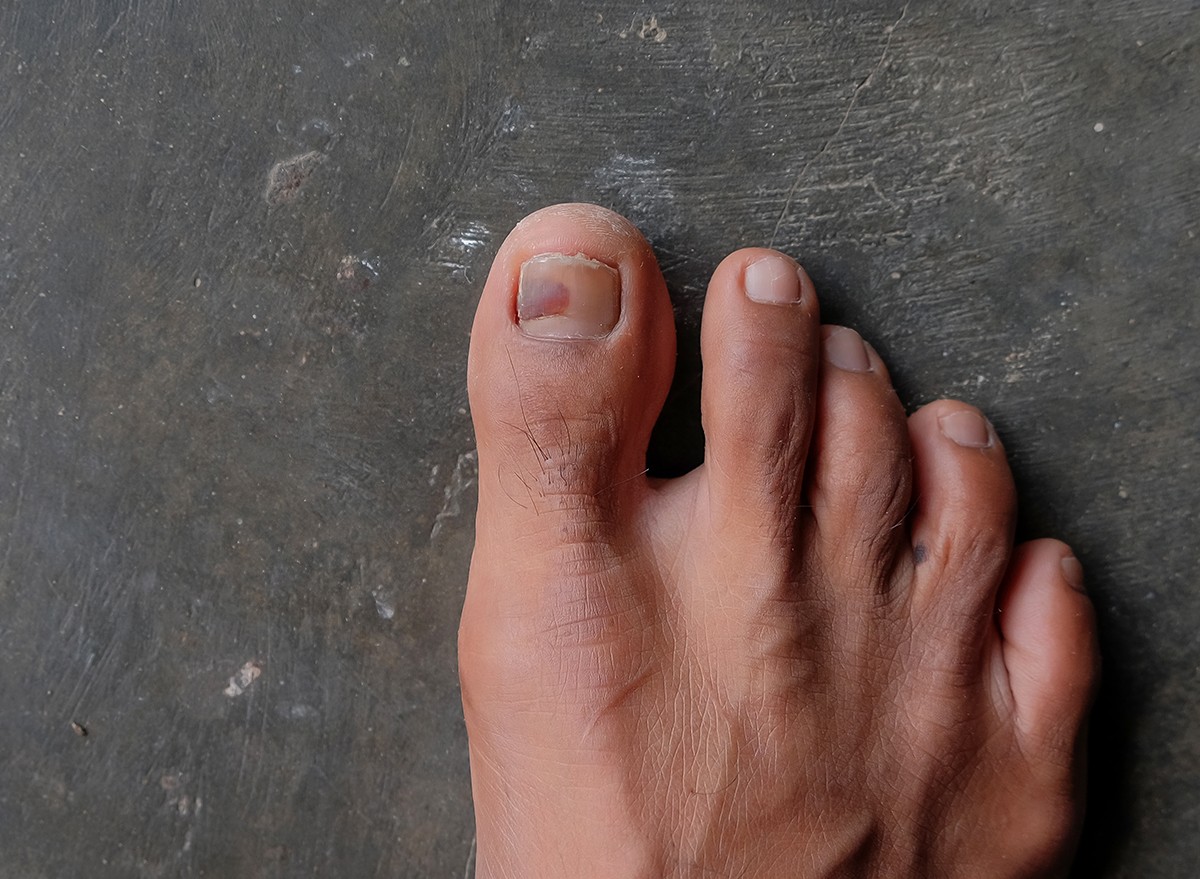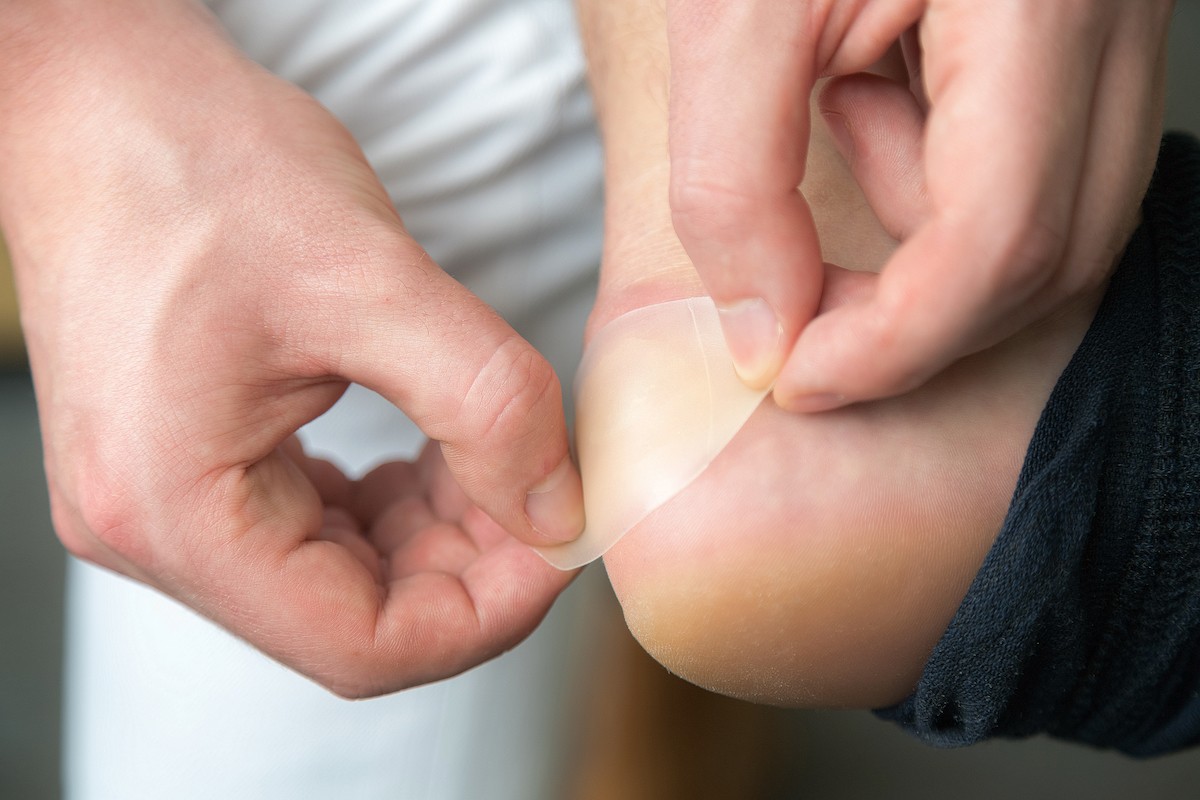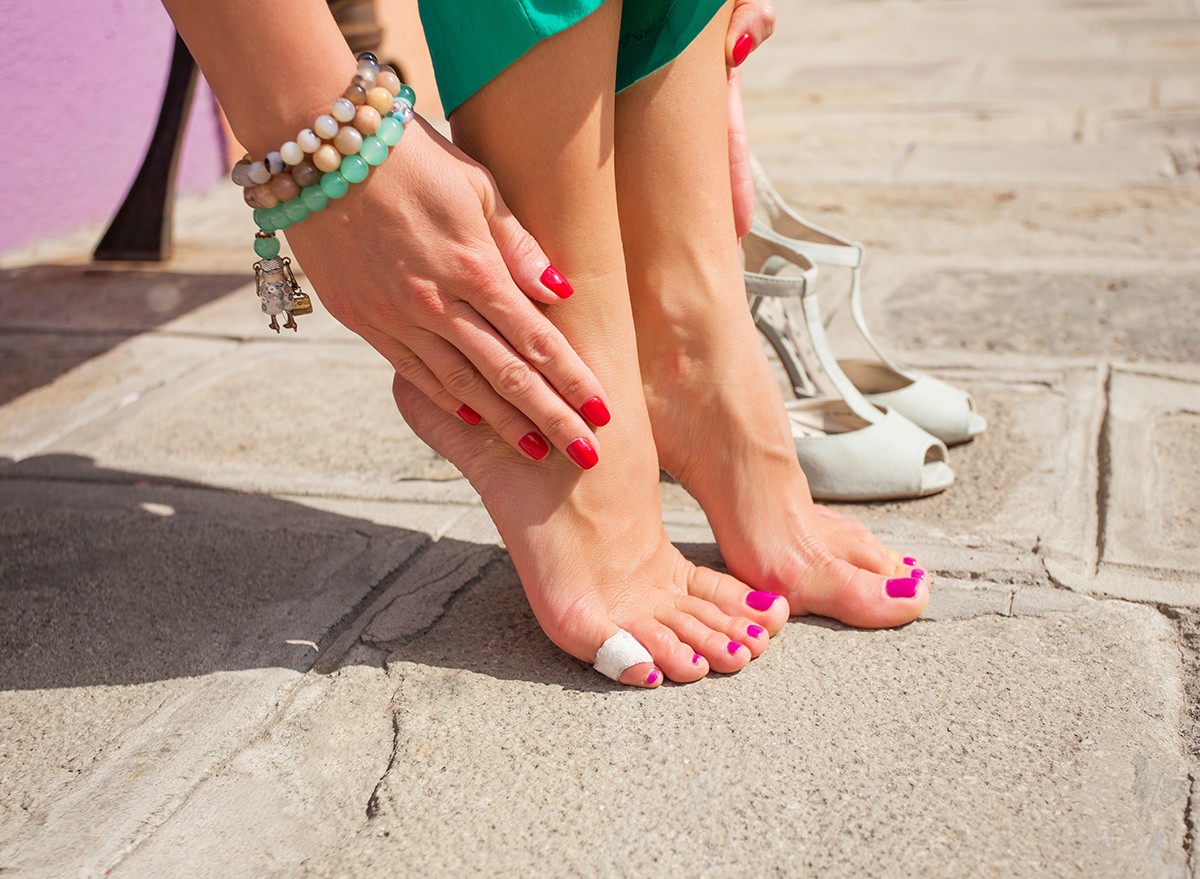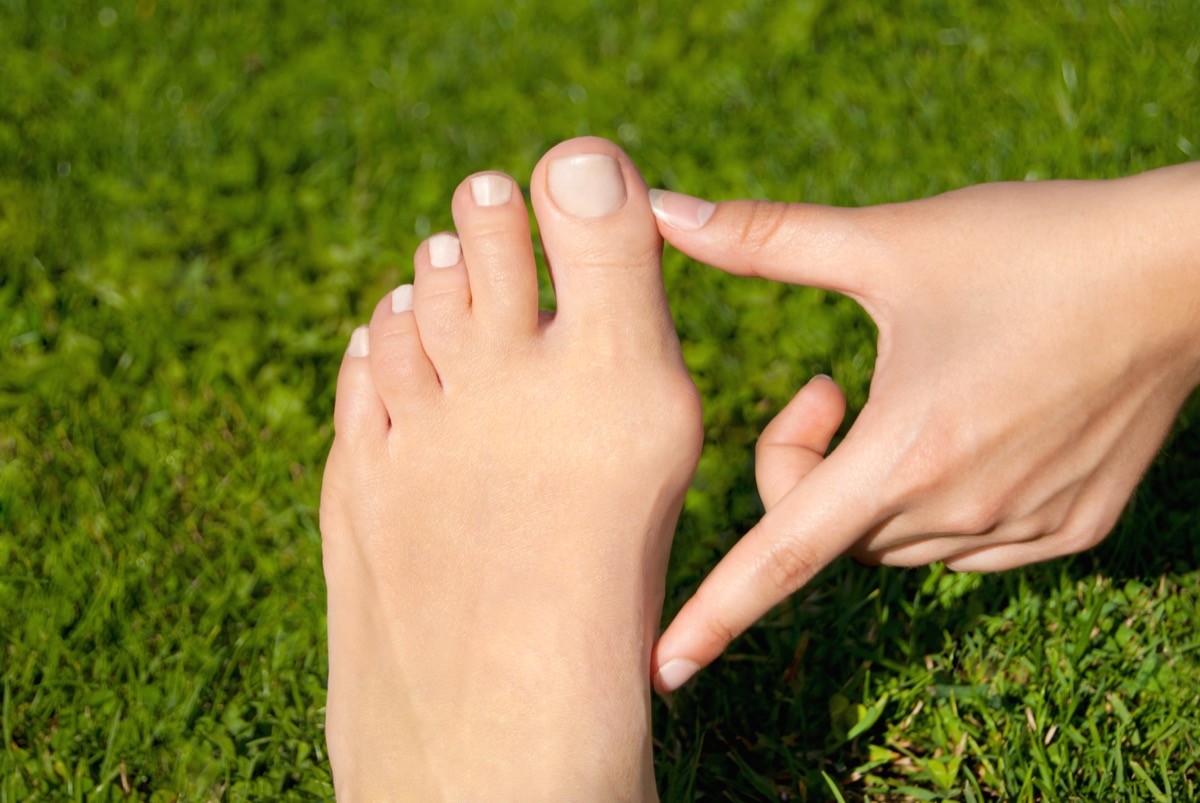5 Signs You’ve Been Wearing the Wrong Shoe Size for Years

Wearing shoes that are too tight is an absolutely miserable experience, even for just an hour—but what if you’ve unknowingly been wearing the wrong shoe size for years? “The wrong shoes can lead to bunions, hammertoes, plantar fasciitis – a lot of foot pathologies,” podiatrist Burkley Jensen, DPM, tells Sanford Health. “It is important to match your activities with the right shoe. If you have any concerns with your current foot deformities or pain, then a visit to a podiatrist can help in getting some guidance on whether your shoes are playing a part or if they would have a role in fixing the problem.” Here are 5 signs you might be wearing the wrong shoe size.
RELATED: The 6 Best Shoes for Walking.
1
Toenail Bruising

Damaged toenails are a common sign of wearing the wrong shoe size. “While toenail bruising and loss are common among athletes, wearing shoes that are too short will certainly accelerate the process,” says Foot and Ankle Center of Lake City. “If you’ve lost a toenail or notice that your toenails have become black or purple it’s time to get your feet measured.”
2
Blisters and Calluses

While minor discomfort is not unusual when getting used to new shoes, long-term issues with blisters and calluses are a major red flag. “Blisters and calluses are typically the result of excessive rubbing, indicating that your shoes are either too tight, causing constant pressure against your skin, or too loose, allowing your foot to slide and chafe against the interior,” says Watsonia Podiatry. “This ongoing friction not only leads to discomfort but can also result in more serious foot problems if left unaddressed.”
3
Nerve Issues

Wearing the wrong size shoes can cause nerve issues. “When you continually squeeze your feet into badly fitting shoes, it puts unnecessary pressure on the nerves in your feet,” says North Central Texas Foot & Ankle. “Over time, that can develop into a nerve problem called neuropathy. While treatable, neuropathy can lead to stabbing pain, numbness, pins-and-needles sensations, heightened sensitivity, and more.”
RELATED: 5 Best Shoes for Plantar Fasciitis.
4
Bunions and Deformities

Bunions and hammertoe could be a sign your shoes are the wrong size. “When shoes are not supportive or constantly put your feet in an uncomfortable position, your feet can become disfigured,” says Clark Podiatry Center. “This can happen, especially with women’s shoes, where the front can be pointy-tipped and high heels can put too much strain on the balls of the feet.”
5
Overall Pain

Ill-fitting shoes can cause pain in your feet and heels. “Even if the pain seems bearable or only appears after long periods of standing or walking, it’s crucial to assess whether your footwear is contributing to the problem,” says Watsonia Podiatry. “Shoes that don’t provide adequate support or fit improperly can lead to an imbalance, placing undue stress on parts of your feet that are not meant to bear excessive pressure.”